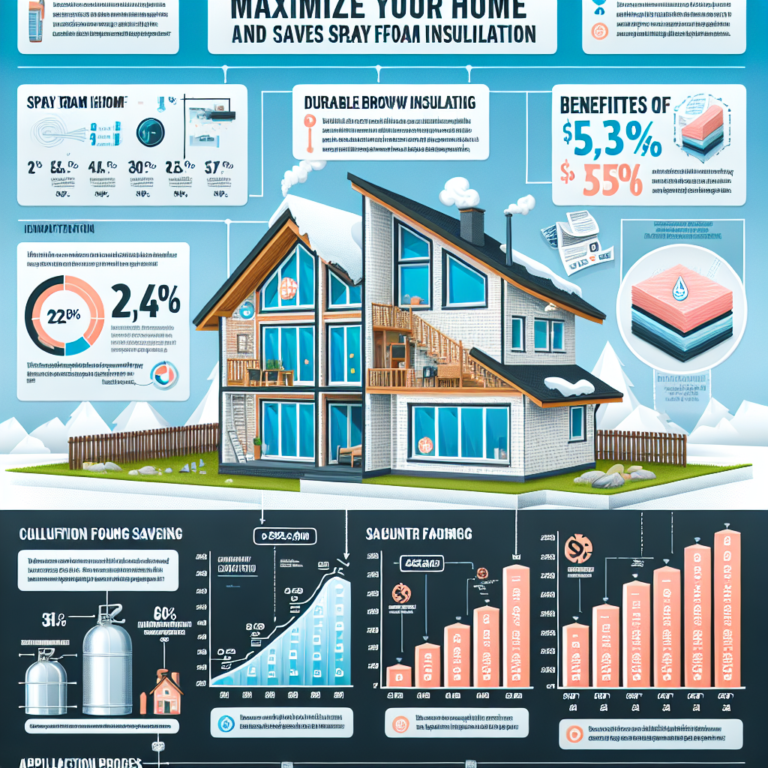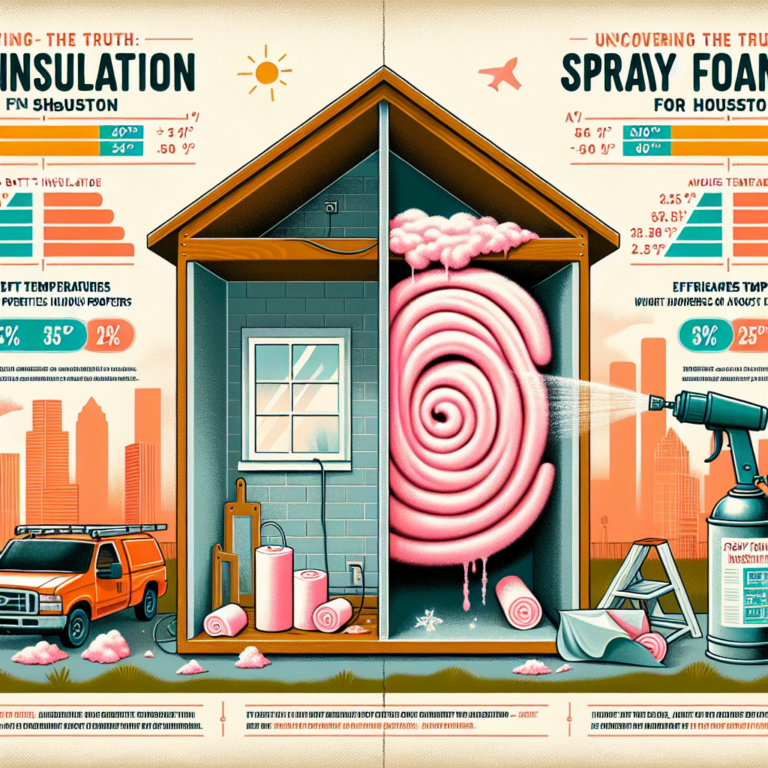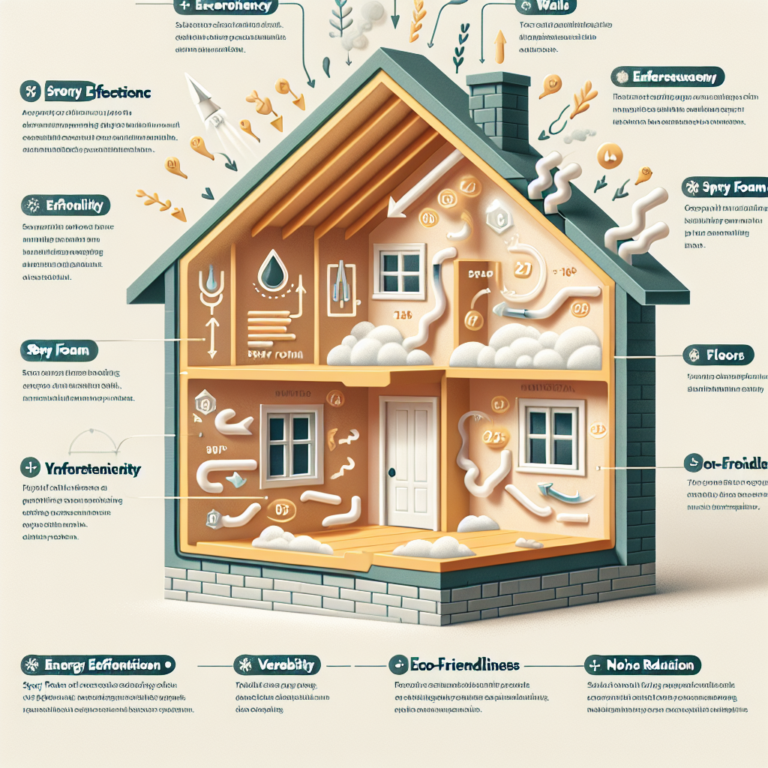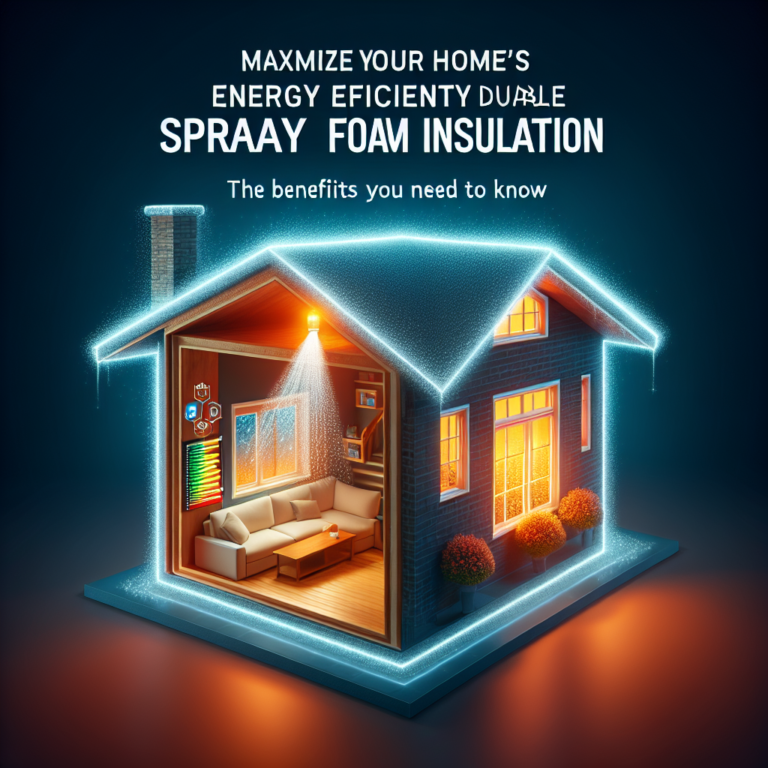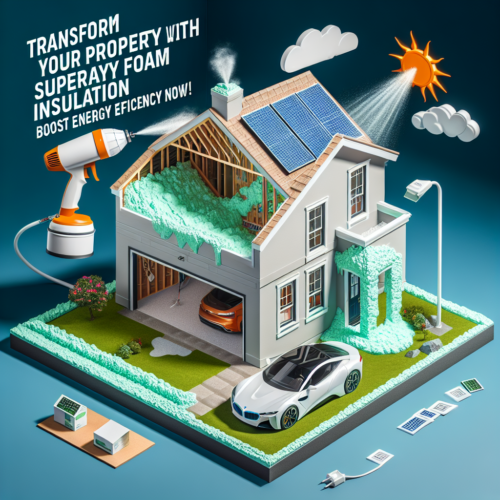Maximize Your Savings: The Surprising Cost of Spray Foam Benefits for Durable Attic Insulation
Introduction
Investing in spray foam insulation can seem like a major upfront expense, but the long-term savings and performance benefits are often underestimated. By sealing every gap and crevice in your attic, spray foam insulation delivers superior thermal resistance, moisture control, and lasting durability. Understanding the true cost of spray foam insulation—and how it compares to other attic options—will help you make an informed decision that maximizes your energy savings and enhances home comfort year after year.
H2: Why Spray Foam Insulation Is Worth the Cost
1. Unmatched R-Value and Airtight Seal
Spray foam insulation achieves an R-value of up to 6.5 per inch, significantly higher than fiberglass batts or cellulose. As it expands on contact, the foam fills every nook and cranny, creating a continuous barrier against air leakage. This airtight seal not only keeps conditioned air inside but also prevents outside air, dust and allergens from infiltrating your living space.
2. Significant Energy Savings
A well-insulated attic means your HVAC system works less to maintain a comfortable temperature. By minimizing heat loss in winter and heat gain in summer, spray foam insulation can reduce your heating and cooling costs by up to 30–50%. Over the lifespan of the insulation, these monthly savings quickly offset the initial investment.
3. Moisture Control and Mold Prevention
Closed-cell spray foam is water-resistant and eliminates moisture entry points. Traditional materials like fiberglass can absorb water and become breeding grounds for mold and mildew. Closed-cell foam maintains its integrity even in humid conditions, protecting the attic structure and indoor air quality.
4. Pest and Rodent Resistance
Spray foam insulation forms a solid, continuous layer that deters insects, rodents and other pests from entering the attic. Unlike loose-fill materials that can be disturbed or burrowed through, spray foam remains intact, reducing the risk of infestations and costly damage.
5. Longevity and Low Maintenance
Traditional insulating materials can settle, compress or degrade over time, leading to cold spots and the need for frequent top-ups. Spray foam insulation retains its shape and insulating power for the life of your home. Once installed, it requires virtually no maintenance, maximizing your return on investment.
H2: Long-Term Benefits of Spray Foam Insulation in Attics
Enhanced Structural Integrity
Spray foam insulation adds rigidity to roof and wall assemblies. Closed-cell foam adheres to wood and metal framing, strengthening the structure against wind uplift and shifting loads. This added durability can extend the life of roofing materials and reduce repair costs.
Improved Indoor Air Quality
By sealing air gaps and reducing drafts, spray foam insulation limits the infiltration of outdoor pollutants, dust, pollen and volatile organic compounds. Homeowners with allergies or respiratory issues often report noticeable improvements in indoor air quality after installation.
Environmental Impact
A more efficient home uses less energy, reducing greenhouse gas emissions. Many spray foam products are now formulated with water-blown or low-global-warming-potential blowing agents, making them more environmentally friendly than older formulations. Over time, energy savings and reduced carbon footprint make spray foam insulation an eco-responsible choice.
Increased Home Value
Energy efficiency is a key selling point in today’s real estate market. Homes with spray foam insulation often command higher resale values and sell faster. Prospective buyers appreciate the lower utility bills, comfort and durability that come with a well-insulated attic.
H2: Comparing Spray Foam Insulation Costs with Other Attic Options
Upfront Cost Comparison
• Fiberglass batts: $0.50–$1.50 per square foot
• Blown-in cellulose: $0.75–$1.50 per square foot
• Open-cell spray foam insulation: $1.50–$2.50 per square foot
• Closed-cell spray foam insulation: $2.50–$3.50 per square foot
Long-Term Savings and ROI
While spray foam insulation carries a higher per-square-foot price tag, its superior R-value and airtight seal yield greater energy savings over time. Homeowners often recoup the extra cost within 3–7 years through reduced heating and cooling bills. Additionally, years of maintenance-free performance and the potential for increased property value contribute to an attractive return on investment.
Durability and Lifespan
Fiberglass and cellulose may need topping up or replacement every 10–15 years, adding future costs. Spray foam’s lifespan matches that of the structure itself, eliminating the need for recurring insulation expenses.
H2: Q&A: Key Questions About Spray Foam Insulation Cost
Q1: How much does spray foam insulation for an attic typically cost?
A1: The total cost varies with attic size, foam type and local labor rates. On average, homeowners invest between $1,500 and $4,000 for complete attic coverage.
Q2: Can rebates or incentives offset the cost?
A2: Many utility companies and government programs offer rebates, tax credits or incentives for energy-efficient upgrades, including spray foam insulation. These savings can significantly reduce your net investment.
Q3: Is professional installation necessary?
A3: Yes. Proper mixing, application and safety protocols are essential for optimal performance and should only be handled by trained, certified installers.
Conclusion
When evaluating the true cost of spray foam insulation, it’s essential to look beyond the initial price and consider the lasting benefits: energy bill savings, enhanced comfort, moisture control, structural reinforcement and higher home value. By creating a durable, airtight attic barrier, spray foam insulation delivers maximum return on investment while promoting a healthier, more efficient living environment. Make the smart choice today—invest in spray foam insulation and unlock substantial long-term savings.


